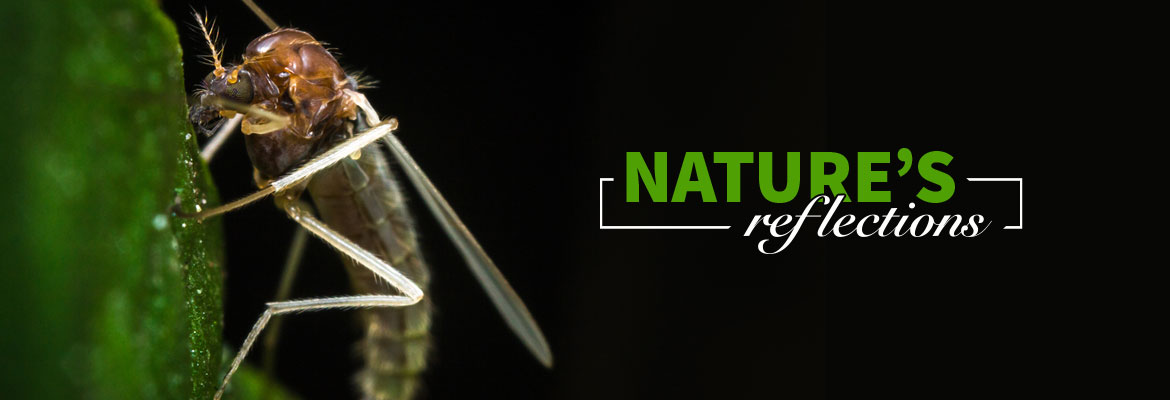
Nature’s Reflections – No-see-ums
No-see-ums
Can’t see them, but you can sure feel the bites
Something is biting you, but don’t see anything? If it’s summer in Florida, it’s probably No-see-ums. The tiny, most irritating insect sometimes called sand gnats or sand flies, are actually part of a family of small flies known as the biting midge (Ceratopogonidae). At less than .03 mm long, all that can be seen is a tiny speck, yet it is the smallest blood-sucking insect on the planet. Like the mosquito, only the female bites.
The bad news is, there are said to be 47 different species in Florida alone, and 4,000 worldwide. This makes it virtually impossible to know which of the species is biting since they all have similar behaviors. And frankly, once bitten, no one cares what species it is, but how to get them to stop biting.
No-see-ums are found during warm weather in all coastal areas, virtually the whole state. They are plentiful and most
annoying at the beach, in the pool, when fishing or just enjoying the outdoors. Since they are all over Florida, if you are outside under the right circumstances, they can find you. The worst biting activity occurs early in the morning and late afternoon, or during an overcast day when there is little or no wind.

Adult female midges take a tiny bit of blood as a source of protein for their eggs. The number of eggs depends on the size of the adult and the amount of blood. Somewhere between 25 and 110 eggs are produced per blood meal. Eggs are laid in wet sand and hatch in three to five days as long as temperatures are at least 80° F. They are short lived, but their numbers make that a moot point.
The midge uses small cutting teeth on the elongated mandibles in its mouth to make a tiny cut in the skin – the bite. The amount of blood taken is insignificant. The irritation comes from the chemical in the saliva that is injected to prevent blood clotting and gumming up their microscopic beaks. The reaction to these chemicals causes the itchy, painful welts that can last for days. Over time, one’s immune system builds up a tolerance to these bites and the welts stop forming. The best preventative measure is avoidance during peak biting times. Repellents labeled for biting midges may offer some degree of relief.
Column & photo by: Sandi Staton




